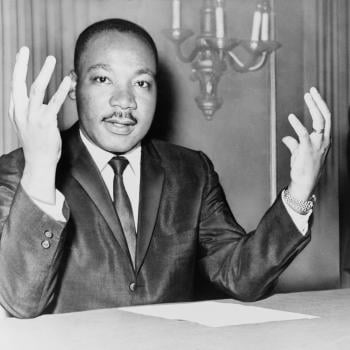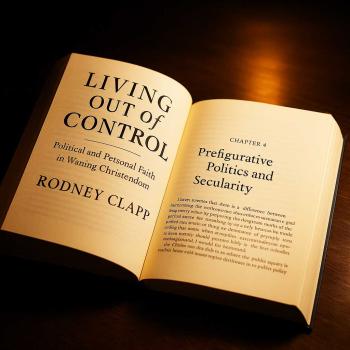Discussion of Malestrom by Carolyn Custis James (Part One)
I recently announced here that I would begin a series of blog posts based on evangelical author Carolyn Custis James’s new book Malestrom:Manhood Swept into the Currents of A Changing World (Zondervan, 2015). I realize most interested people will not have had time to order and receive a hard copy of the book. So, after this first post in the series, I’ll wait a few days until posting Part Two. This is to whet your appetite. Of course, if you download the book to your e-reader you can begin to read it immediately. Some of you may have already.
So far I have only read the “Acknowledgments” and “Introduction,” but the latter sets the stage for the rest of the book—without answering all the questions that will be taken up later.
So what is James’s “malestrom?” It is “the crisis of identity and purpose facing men and boys globally.” (15) So far James and I agree—there is a growing crisis affecting males and it has to do with purpose and identity. That is, what used to be taken for granted, for example that being male was a privilege, can no longer be taken from granted and that is creating a crisis that some (not James) have identified with the question “Are men obsolete?”
In the Introduction James touches on many issues affecting men today—violence among men, the rise of women especially in education and many professions (she doesn’t mention the health industry which I wish she would), the decline of men evidenced by the rise of “SYMs”—“Single Young Men” who often drift in life without apparent attachment (except to computers) or goals, etc.
Sidebar: I recently watched a documentary about boys in China. China has officially identified boys’ obsessions with online gaming as a national crisis and has declared it a mental illness. Recovery institutions, much like juvenile jails but focused on counseling, have popped up all over China. They are populated primarily by adolescent boys who are addicted to computer gaming. Their parents commit them to these resident institutions for a kind of re-programming. When asked why he spends most of his life playing video games one boy said (paraphrasing) because it is the only place he can be a hero. The one problem I found with the documentary, made by two women, is that it never discussed the fact that nearly all the victims of this addiction (or commitment) are young males even though that was clearly the case. There was no discussion by anyone about why young males are increasingly devoting their lives to the internet.
I can only applaud James’s recognition of the problems facing men and society because of the problems men face. She is right that this crisis is also a women’s issue. When a large segment of society is unstable, deeply troubled, in crisis, all of society is affected. Most people are paying very little attention to this particular problem—the one James dares to label the “malestrom.”
The only complaint I have so far about the book is that, just going by the Introduction, James seems to pin the whole malestrom on “patriarchy.” “Trace any current of the malestrom to its roots, and you’ll end up looking at patriarchy (‘father rule’).” (30) I agree that patriarchy is bad and a problem—for both males and females—insofar as it means automatic, dominating power-over by males. But I disagree that it is the sole source of what James calls the malestrom. I would challenge her to think also about society’s reactions to the discovery of the evil of patriarchy. Some forms of feminism and much of society’s interpretation of feminism (which may have little to do with real feminism’s original goals) also impact males negatively. Garrison Keiller put it this way (again paraphrasing): Being a man used to be a privilege, now it’s just a problem. That is, in much of the media, for example, men are portrayed as either stupid (or silly) or sinister. The media has created fear and disdain of men-in-general. The fallout from feminism and the rise of women has also resulted in a neglect of boys in education. As Newsweek put it, much American education treats boys as “defective girls.” Literally hundreds, if not thousands, of non-profit organizations have sprung up to help girls thrive—and they are being successful. In the meantime, boys are being neglected, drifting, falling behind and dropping out, and generally wondering whether being male has any value. James acknowledges some of these symptoms of the malestrom, but tracing them all to patriarchy does not seem to me quite right. Some of them seem to me the result of society’s reaction to patriarchy.
I detect that underlying James’s discussion of the malestrom is her own experience as a woman struggling for recognition, acknowledgement and power in the largely male-dominated conservative evangelical subculture. That seems to color her view of gender issues. I, on the other hand, have long ago abandoned that subculture and have attended several churches pastored and led by women. I have worked in educational institutions not free of patriarchy but less influenced by it (I would say) than perhaps some of the evangelical institutions James knows firsthand.
Toward the end of the Introduction James says she is unapologetic about taking up this subject as a woman and says “I believe a female perspective is essential.” Fine, I agree. But I wonder if she has sought out a male perspective on the issue—other than the typical ones? The typical ones are the knee-jerk conservative defense of patriarchy, what she calls “soft patriarchy,” a “kinder, gentler” attitude toward gender that still affirms patriarchy, and the feminist male perspective which sides with the common (not universal) feminist belief that there is no real distinctive value in being male per se—except that males can become more like females if they are trained and willing to change.
So, there, I just revealed my underlying hesitation about this book (and most like it). But I remain open to having that hesitation relieved as I read on. What is that hesitation? Well, anyone who has read this blog very long, especially my posts about sex and gender, already knows.
In the Introduction James reveals that she buys into the settled sociological orthodoxy that says “sex” is only physiology and “gender” is always only cultural. I believe differently. (And I find it interesting that, so far, in my experience, that claim is brought up only when males are being considered.) I believe that sociological orthodoxy is largely politically driven and that, while males and females are equal in terms of value and should be equal in terms of privilege, there exists a real ontological distinction between them that neither biology nor sociology can fully explain. In other words, I believe the settled sociological orthodoxy is reductionistic and has resulted in the idea that, since aggression is (allegedly) the only typical male characteristic across all cultures, and since aggression is bad, sex is biological and gender is socially created, the duty of society is to tame male aggression—with medicines to sedate boys, social engineering to make boys more like girls (especially in schools), and a general social-cultural attitude that male aggression (by which here I mean desire and determination to have an effect on the environment through use of energy) is bad even though prevalent among males. In other words, to emasculate boys and men.
So what’s my solution? Well, first, we need to recognize positive traits characteristic of (not unique to) males—such as inventiveness, the drive to create, the desire for heroism (viz., aggression for a good cause). All can be and often are distorted, but they don’t have to be. Second, we (society) need to stop beating up on males as the “bad sex.” Third, we need to rediscover the absolute importance of the one thing males can do better than females if they are “good men”—be a father. And I don’t mean “reproduce.” I mean function in the role of father to children—whether theirs biologically or by adoption or just by mentoring.
As some of my followers know, I have looked for books and video productions (television shows, movies, documentaries, etc.) that portray men in a truly admirable light—holding up for readers and viewers images (fictional or real) of good men who are not feminized/emasculated and neither stupid nor sinister. Of course, Atticus Finch in To Kill a Mockingbird is one. Less well known are the male protagonists of several books by Catherine Ryan Hyde, author of Pay It Forward (e.g., When I Found You and Take Me with You). Right now I am reading a novel titled Early Autumn by Robert Parker. It’s hardly great literature, but the hero, a private detective, is a “real man’s man” who “adopts’ a neglected teen boy, protects and nurtures him in becoming a man, and uses aggression when necessary to protect him—beyond legal boundaries. I find it hard to resist the suspicion that both Hyde and Parker were consciously trying to portray admirable, non-emasculated men for their readers. In the realm of video entertainment I will mention the PBS “Masterpiece Theater” series “Poldark”—featuring a male hero who is a real “man’s man,” non-emasculated, who doesn’t hesitate to be aggressive, but who genuinely cares about those around him—especially the weak and powerless. Unfortunately, and typically, he’s the only good man in the whole series. All the other male characters are either weak of character or downright sinister.












